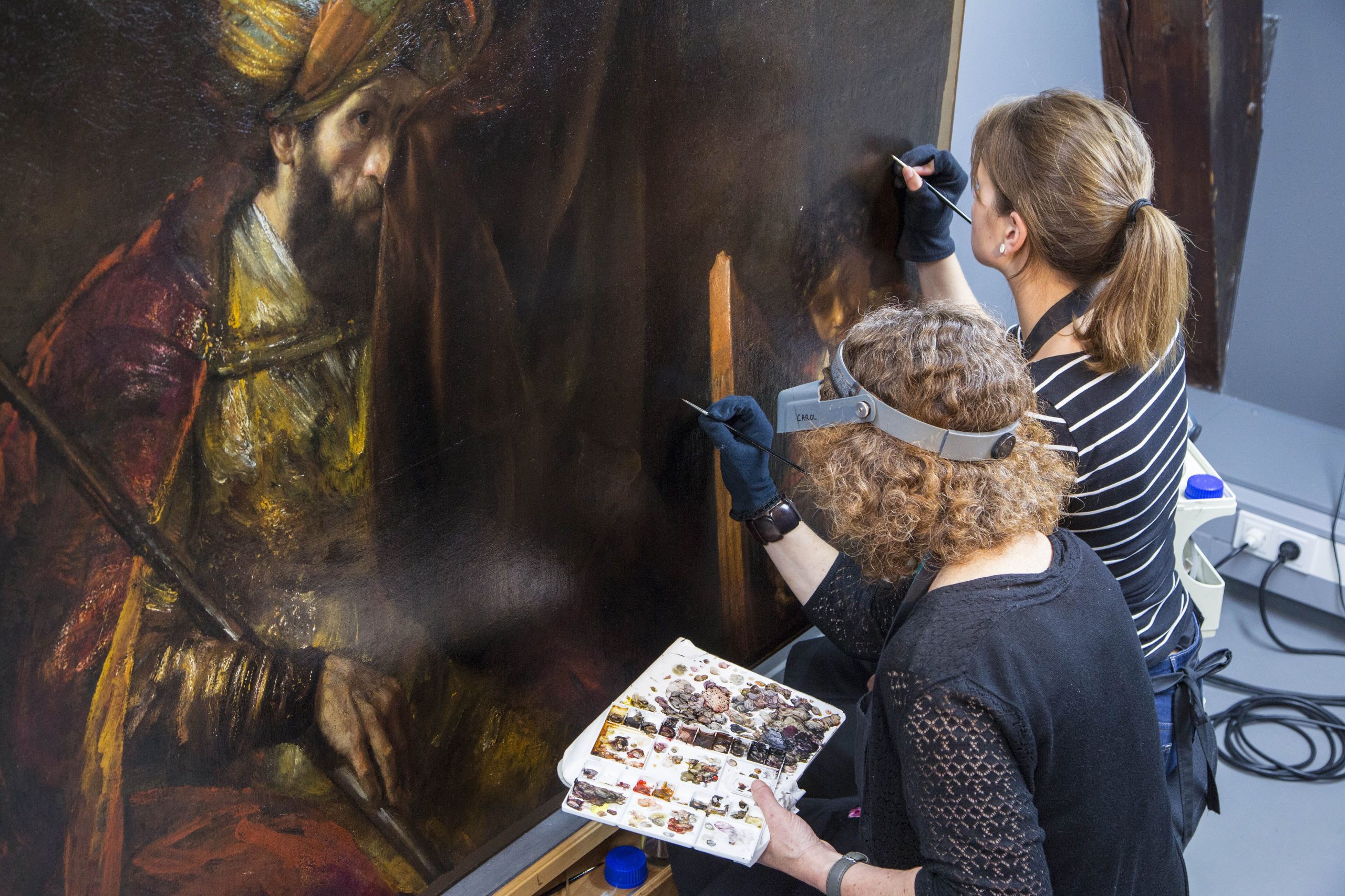The Mauritshuis unveils the restored painting Saul and David by Rembrandt this month. TU Delft paint expert Professor Joris Dik (3mE) helped unravelling the history of this canvas.
It might be one of Rembrandt’s most beautiful works. Set against a dark background, the painting ‘Saul and David’ depicts the two figures from the Old Testament in an emotional setting. At left is King Saul, seated, and wiping his tears on a curtain while at right, the much younger David plays his harp as he kneels before Saul.
The painting emerged in 1830 at an auction in Paris. It then remained on the market for years until its purchase by Mauritshuis Director Abraham Bredius in 1898. There was no doubt in his mind that this was one of Rembrandt’s most important paintings.
In the 1960s and 70s, Rembrandt’s oeuvre was re-examined. Horst Gerson (a Rembrandt expert and authority in his time) de-attributed many of Rembrandt’s paintings, including Saul and David. Opinions about the attribution of the work have varied widely ever since. Is it really by Rembrandt? By a pupil? Or perhaps both?
Connoisseurs thought it was strange that Saul wipes his tears with a curtain. This is an unusual scene in seventeenth century art. The curtain also seemed to have been added onto the painting later. What’s more, the area between the figures is very worn, which suggests that something is missing from the composition.
It was clear that strange things had happened to the painting. The Mauritshuis decided to research and restore the painting in 2007. This crime scene investigation, as the museum likes to call it, took eight years. Joris Dik discovered important pieces of the puzzle.
With an X-ray technique, called macro Xray fluorescence, Dik analysed the subsequent layers of paint on the canvas, and he found that yet another drape was hiding underneath the curtain. “So it is true”, said Dik. “In the original painting, Saul also weeps his tears with the curtain.”
Earlier, in 2008, Dik used that same technique on a painting by Vincent van Gogh. He discovered a previously unknown portrait of a woman by peering beneath the paint of Van Gogh’s painting ‘Patch of Grass’
The restaurateurs have removed the newer layer of paint. “A courageous thing to do”, said Dik. “Our research indicated that there was another curtain underneath, but if we had been wrong, the painting would have gotten messed up even more. Now that this has been done however, we have good verification of our technology.”
It appeared that the masterpiece was cut into two pieces, most likely between 1830 and 1869, and subsequently reassembled. The painting consists of no fewer than 14 different pieces of canvas: two large pieces from the original canvas (one with Saul and one with David), complemented by an old canvas (a copy of a portrait by Anthony van Dyck) and other strips on the edges of the painting.
What’s also interesting about the exhibition is that it presents the original format in a novel way, using a 3-D reproduction. This was made possible thanks to a stereoscopic scanner developed two years ago by TU researcher Tim Zaman (3mE).
The key question, however, remains. Is this a genuine Rembrandt or not? The museum is convinced this is the case. Yet it was a good enough sport to have other art experts voice their doubt in the exhibition.
The exhibition ‘Rembrandt? The case of Saul and David’ can be seen in The Mauritshuis in the Hague from June 11 to September 13, 2015.


Do you have a question or comment about this article?
tomas.vandijk@tudelft.nl


Comments are closed.